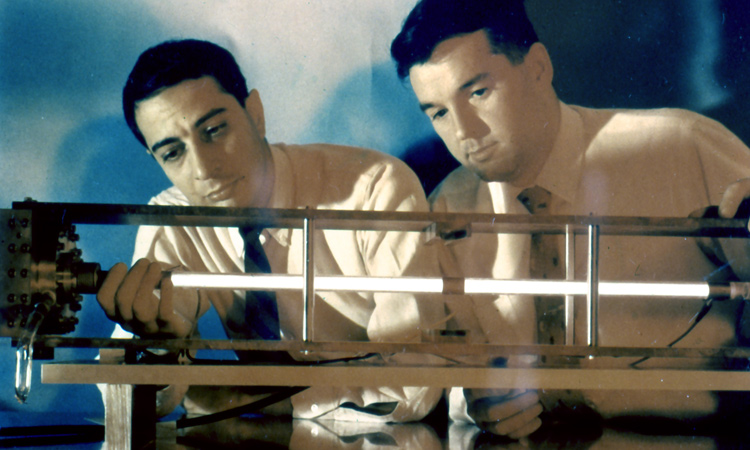Feature
How Lasers Got Practical
In ease-of-use and reliability, particularly as aided by automation, lasers have come a long way since the first bare-bones products of the early 1960s.
 Ali Javan (left) and Donald R. Herriott work with helium-neon laser, Bell Laboratories (1961). [Bell Laboratories / Alcatel-Lucent USA Inc., courtesy AIP Emilio Segrè Visual Archives, Hecht Collection]
Ali Javan (left) and Donald R. Herriott work with helium-neon laser, Bell Laboratories (1961). [Bell Laboratories / Alcatel-Lucent USA Inc., courtesy AIP Emilio Segrè Visual Archives, Hecht Collection]
Today we scoff at the old joke that the laser is “a solution looking for a problem”; modern lasers have become ubiquitous, sophisticated tools in fields ranging from medicine and telecommunications to metalworking. But the joke did make sense in the 1960s. Back then, only a handful of wavelengths were readily available. Cavity optics were tricky to align, gas seeped from laser tubes, mounts were often homemade, and pump lamps could explode. You almost had to become an expert on lasers to use one.
…Log in or become a member to view the full text of this article.
This article may be available for purchase via the search at Optica Publishing Group.
Optica Members get the full text of Optics & Photonics News, plus a variety of other member benefits.
